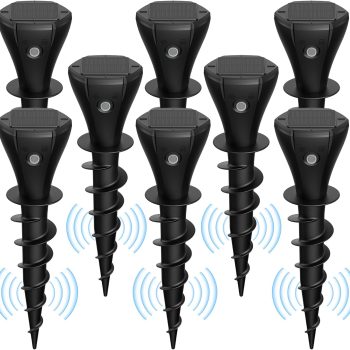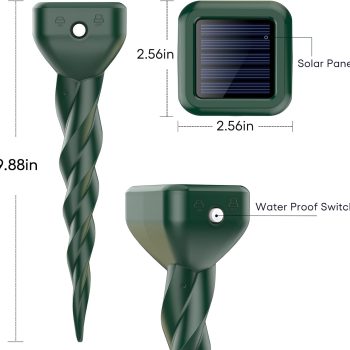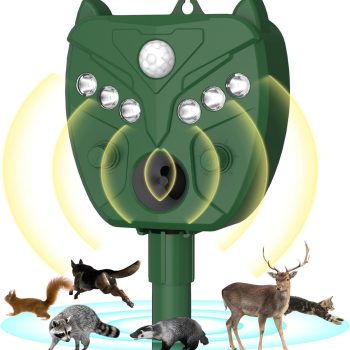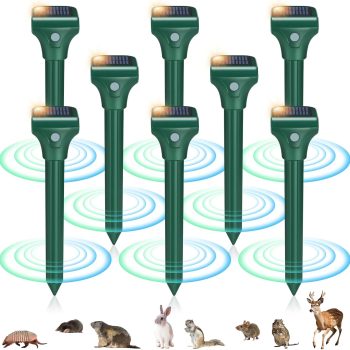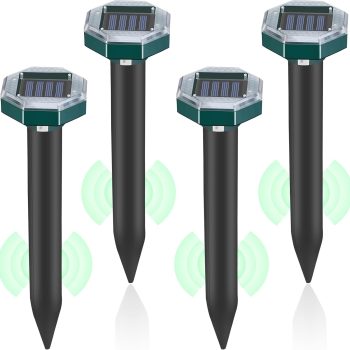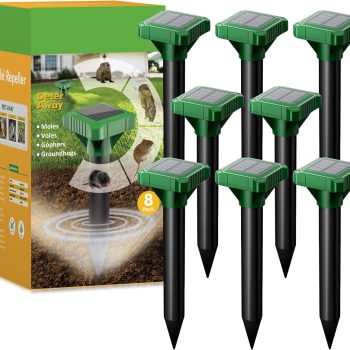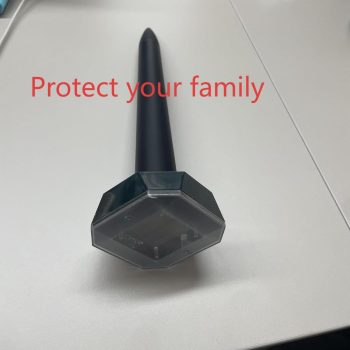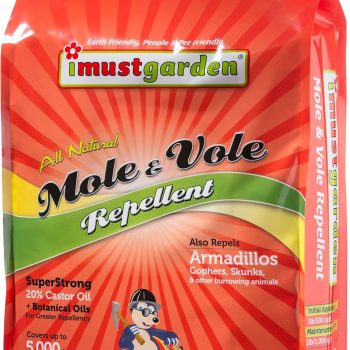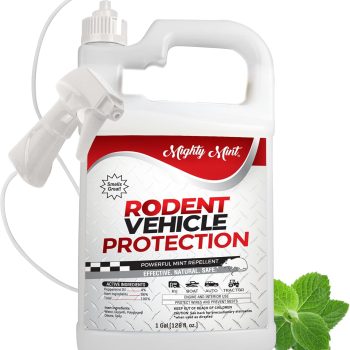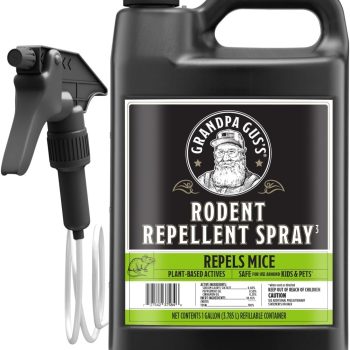Getting Rid Of Groundhogs Mothballs
Solar Groundhog Repellent
Mole Repellent Solar Powered 8 Pack, Ultrasonic Gopher Repeller IP65 Waterproof, Repels Moles
Getting Rid of Groundhogs with Mothballs
Groundhogs, also known as woodchucks, can be a remarkable nuisance for gardeners and homeowners. Groundhogs burrowing habits and appetite for a variety of plants can lead to significant damage to yards, gardens, and landscaping. While many methods exist to deter these furry creatures, using mothballs has garnered attention as a potential solution. Below, we’ll explore how mothballs work to repel groundhogs, the proper application techniques, and additional precautions to consider.
Understanding How Mothballs Deter Groundhogs
Mothballs are typically made of naphthalene or paradichlorobenzene, chemicals with a strong odor. This scent is unpleasant for many animals, including groundhogs. Making it an effective deterrent. When groundhogs encounter the potent smell of mothballs. Groundhogs may associate it with danger, prompting them to steer clear of treated areas.
The effectiveness of mothballs relies on their ability to emit vapors that persist in the environment. However, it’s important to note that while mothballs can help repel groundhogs, they may not eliminate the problem. These animals are resourceful and may find alternative food sources or dens if determined enough. Therefore, mothballs are best as part of a broader integrated pest management strategy.
Proper Application Techniques for Mothballs
To effectively use mothballs for groundhog control, follow these steps:
- Identify Problem Areas: Where groundhogs are active, such as caves, feeding areas, or garden beds. Understanding their habits will help you determine where to place the mothballs most effectively.
- Placement of Mothballs: Strategically place mothballs around cave entrances, along pathways, and near vegetable gardens or flower beds that groundhogs favor. Ensure they are spread out evenly to maximize the area treated with the repellent odor.
- Use Appropriate Amounts: It is generally recommended that you use about 3-5 mothballs per burrow entrance or square foot of the garden you want to protect. Make sure the mothballs are placed so that they remain exposed to the air for optimal odor dispersal.
- Safety Considerations: Mothballs contain chemicals that can be harmful if ingested or inhaled in significant quantities. Always handle them with care and keep them out of reach of pets and children. Consider placing mothballs in sealed containers with perforations to reduce direct contact while allowing the scent to escape.
- Monitor and Replenish: Mothballs’ effectiveness can diminish over time, particularly after rain or exposure to extreme weather. To maintain their repellent qualities, regularly check their condition and replace them as needed.
Additional Precautions and Solutions
While mothballs can help in repelling groundhogs. They should not be your only
method of defense. Combining this approach with other strategies can lead to more successful outcomes. Here are some additional measures to consider:
– Fencing: A sturdy fence buried at least a foot underground can prevent groundhogs from entering your garden.
– Natural Deterrents: Using smells that groundhogs dislike, such as garlic or hot pepper sprays. This can add another layer of deterrence.
– Traps: If groundhogs remain persistent, humane traps can effectively remove them from your property. Always check local regulations regarding wildlife trapping and relocation.
By combining mothballs with other preventative strategies, you can significantly reduce the presence of groundhogs in your yard, ensuring that your garden remains a thriving, beautiful space.

